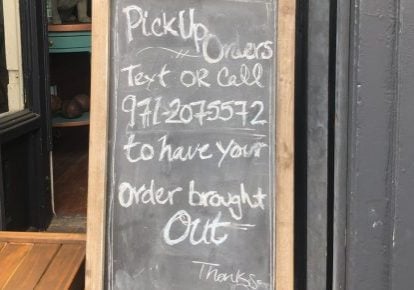
Like every other industry, E-commerce is feeling the effects of the Coronavirus emergency. You may be wondering, what are the best ways to talk to customers about Coronavirus safety and reliability issues.
Demand is soaring for certain kinds of products, and bottoming out for others, depleting stocks and challenging supply chains. Amazon and other dropshipping warehouses are scrambling to design safe workplace practices and cope with ongoing delays.
In the context of all this uncertainty and genuine fear, smart e-merchants are finding various effective ways to talk to customers about Coronavirus and inspire the confidence they need to keep buying from you. Writing these kinds of messages isn’t easy for a lot of people, so we’ve collected some great examples of customer emails, banners for your storefront, and Special Notice messages that other merchants have been using since the crisis started.
1. All-Customer Emails
Many e-merchants have been proactive, sending out emails to all their customers to let them know what special steps they’re taking to keep orders flowing and everyone safe.
Megagear
Here’s what Megagear sent to all its customers:
They’re giving important health and safety reminders, informing readers about their own safety practices, and (though this was likely in the works anyway, given today’s trend towards free shipping), they’ve added a timely sweetener in the form of worldwide free shipping.
Loose Threads
Loose Threads put a twist on their communications, creating a free customer Hotline to field questions about how to deal with ecommerce business disruptions, and creating a new media asset for related reading:
Houzz
Furniture and lifestyle marketplace Houzz took a breezier approach, turning home confinement into a straight marketing opportunity, but not in an offensive way:
Houzz also created separate messaging for an important stakeholder community, the designers and other pros who purchase on behalf of their own clients, offering them ideas to showcase their work, network with other designers, and communicate with their own clients.
2. Storefront banners
Storefront banners are a way to tell all visitors – new and old customers alike – what you are doing about the Coronavirus emergency. Since so many customers are nervous about contamination from any items that may enter their home, or worried that a vitally needed item may not arrive in time, a banner notice about how you’re handling the special situation is highly recommended.
Chewy
Pet product e-tailer Chewy has experienced a huge surge in orders since the emergency began. They’ve added a banner message as a heads-up that all orders will take longer than usual, and a sliding hero image linking to a special page they’ve set up for creative ways to hunker down with your pets.
McSweeney’s
Independent literary publisher McSweeney’s added their nicely crafted message in a banner at the bottom of the page.
3. Dedicated Special Message pages
Many e-commerce sites have created separate pages, linked from a storefront banner, explaining how they are handling things.
Overstock
Overstock may have gone a little overboard, but their Special Message is actually a whole new content section, with a searchable window for queries, a full length message from the CEO, and links to a variety of content sources related to the emergency.
Notice they also are announcing free worldwide shipping as a response.
Republic of Tea
Republic of Tea knows its customers very well, offering text that’s tailored to their tastes and preferences. This is a great example of a relatable message:
Practice good communications, and make it a habit for the future too.
These are certainly challenging times. Nurturing your customers with reassurances that it’s still safe and practical to buy from you is one very important way to keep them coming back in the future. It’s also a good chance to reinforce your relationship and keep them loyal to your brand.
The basic principles of good communication with customers are to
- Be honest about any potential or actual service disruptions.
- Tell them how you are handling your operations to keep both staff and customers safe.
- Reassure customers that you will stay in communication if they have questions or concerns, and that you’ll share any relevant news, updates or changes with them.
- Keep your tone friendly and upbeat, and in a style consistent with how you generally communicate as a brand.
The foregoing examples will help with any writer’s block you may have been experiencing, and also lend some good ideas to run with.




